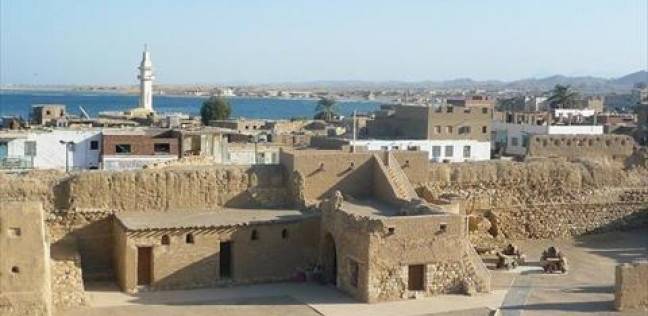Once you step into the
place, your attention is immediately arrested by the muzzles of two protruding
cannon, brought by the French to protect the town and port, they now overlook
visitors, as they shop in the bazaars beneath. Only one of them is actually of
French manufacture, the other is probably of Dutch origin.
The Ottoman castle is an impressive huge fort which speaks of a lively town of strategic importance, built by "Sultan Selim II", ruler of Egypt during the 16th century, in 1571, that is seen as a fully controlled center of the Quseir's city, 79 Kms from Port Ghalib, built over a high limestone plateau, covered with a round rock, consisting of round gravel, The west side, or the Ottoman fortress, the Egyptian border guard from the east.
The main reason behind building such a castle was to protect Hajj pilgrims and commercial convoys used the Quseir's port, from the aggression of the Arabs which led to disruption of work in the port and the delivery of supplies to the Hijaz. The citizens called on the Ottoman governor of Egypt, Sinan Pacha, to send a letter to the Sultan, "Selim II," suggesting that he would build a fortress in the palace to protect the convoys of pilgrims, trade, port and residents of the city.
In 1799, the French who had sent a military expedition to Egypt, under the command of General Napoléon Bonaparte, seized the fort, built a tall viewing platform, widened the ramparts and added a number of cannon, some of which can still be seen. They also left a garrison of some one hundred soldiers.
The British twice attempted landings in order to destroy the drinking wells of the city but were forced to withdraw in the face of heavy cannon and musket fire and lost one cannon in the surf, which may, subsequently, have been added to the fort's own battery of guns.
During the following years, the fort was used as a base for Muhammad Ali Pasha's wars against the Arabs, but after the opening of the Suez Canal, its strategic significance was considerably diminished. However, it remained in use as a base for the Egyptian coast guard until 1975.
Recently, restoration and renovation of the fortress has been completed. Cannons are once again pointing, seawards, from their original gun ports. The viewing platform was also restored with the help of illustrations from the "Description de l'Egypte" that had been commissioned by Napoleon. The fortress now houses the new "Visitor Center" containing displays on local history, archaeology and culture of the surrounding region.












 All
All
 Politics
Politics
 Economy
Economy
 Tourism
Tourism
 Nature
Nature
 Community
Community

